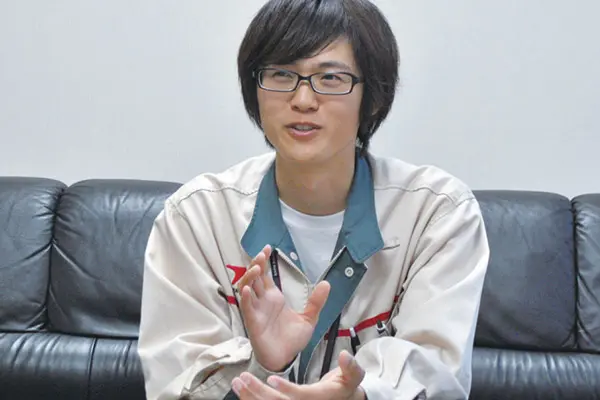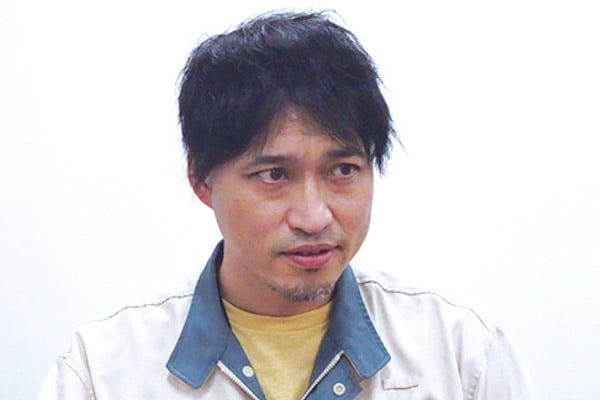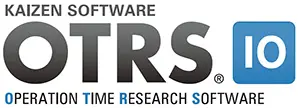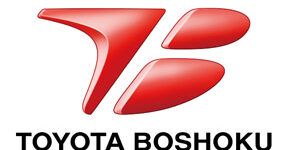OTRS Work Optimization Software Case Study
Toyota Boshoku Corporation | Using videos to share points requiring
improvement and increase productivity by approximately 25% with OTRS10 work optimization software



Industry: Manufacturing


Employees: 41,409


Revenue: 1.4 trillion yen
* Consolidated (FY 2017)
Foundation: 1918
Address: 1-1 Toyodacho, Kariya, Aichi 448-8651
Business Description:
- Interior-system supplier business and manufacturing and sales of interior products
- Manufacturing and sales of automotive filters and powertrain parts
- Manufacturing and sales of other automobile-related parts
- Manufacturing and sales of textile-related products


Issue
Variation in work depending on who did it and an inability to increase productivity
Outcome
Productivity increased by approximately 25%, and production plan achieved through use of work optimization software
Introduction Background (Issue)
There was no standardization of paper-based business documents or on-site work
The Toyota Group promotes work standardization at production sites based on a motto emphasizing that there can be no improvements without standardization. At Toyota Boshoku Corporation, a Toyota Group company, three fundamental standardization sheets (production capacity sheet, standardized work combination table, and standardized work chart) and other documents were handled on a paper basis. However, how much each writer wrote (the level of detail) differed, and there was variation in work depending on which worker did it. Although air cleaners and other major products have been improved to a certain level over time, similar improvements were not apparent for production lines that had just been started up. There were also problems with the accuracy of the initially determined standard time, numbers differed depending on the location, and downtime occurred.
This resulted in problems that must be addressed before improvements can be made, such as having to revise the standard time by remeasuring it with a stopwatch. When Mr. Numa, who was formerly with Toyota Motor, became the new president of Toyota Boshoku, he brought up the above production site issues and launched a project to make improvements and resolve the problems.


“When President Numa saw that the business documents at the Kariya Plant had not been standardized, he was quick to point out that there was no way our work had been standardized and that we should all stop, take a hard look at our current work, and start from there.” – Takashi Sato, Kariya Plant Unit Global Promotion, Kariya Plant
Why OTRS Work Optimization Software was selected
OTRS10 work optimization software was selected based on a top-down perspective due to its history of use for development
President Numa specifically suggested work optimization software OTRS as a tool for analyzing the work situation. This was due in large part to the software’s extensive 20-year-plus history of introduction results, and the decision was made to introduce the latest version of OTRS at the plant where Mr. Sato works.
“With typical video editing software, all you can do is record a video and look at it. However, with OTRS10, we can use recorded video data to perform a detailed operational analysis of each work element. I think this makes OTRS10 work optimization software the best tool to easily determine how to correctly standardize work.” – Takashi Sato
Introduction process
Over half a year of working together to ensure that the work optimization software could be used on-site
After OTRS was introduced in February 2017, Mr. Sato spent the more than half a year up to October carefully considering how to utilize the software, including issues such as the development of standards for work and business documents, data collection, and database creation. He also suggested upgrades to Broadleaf, the manufacturer, in order to improve the usability of the software for various types of manufacturing and had them implement the upgrades, thereby laying the groundwork for effectively using the system.
“As an example, there was irregular incidental work on one of our lines that occurred once every five cycles and resulted in downtime. At first, OTRS wasn’t capable of factoring this incidental work, but Broadleaf made it possible to do so as soon as I suggested it. We were therefore able to digitize the occurrence of downtime that could not be expressed using the conventional handwritten business documents and standardize our work based on the data we analyzed.” – Takashi Sato
Introduction outcome
OTRS10 made it possible to check who worked the fastest and increase productivity by approximately 25%
They were having trouble increasing productivity for newly launched motor with gear, but they were facing the need to produce the number of units that exceed their capacity at the time. Rapid improvements were required, so the chief leader in charge immediately gave his consent, and they started filming the work done by its employees day and night. As a result of using OTRS10 to perform a detailed analysis of each work element, they discovered that there was variation in work depending on who did it.
With performing a detailed comparative analysis of the data, they now can understand who was doing the work for each work element the fastest. Having everyone look at the videos made it possible to explain specific ways of using their hands, which used to be quite di cult to teach using conventional paper-based manuals. The workers also came up with various improvement plans, and Toyota Boshoku achieved an approximately 25% increase in productivity.


“Thanks to a considerable increase in productivity, we started seeing that we could actualy be able to achieve our plan. Besides, what made me happiest of all was when the chief leader, a man who takes pride in his craftsmanship, said, “Thank you introducing such a fine tool.” I was worried that introducing OTRS10 might be a hassle for people working on-site, but everyone was really cooperative in giving each other advice, which led to improved teamwork. I was so relieved, to be honest.” – Takashi Sato
The next step
Promoting the companywide use of OTRS10 and aiming for constant improvements
Now that the advantages of utilizing OTRS have become apparent, Mr. Sato has assumed a new role based on OTRS’s successful application to motor with gear: to expand the use of OTRS10 to other Kariya Plant lines as well as plants both within and outside Japan.
“As I collect data at the Kariya plant and compile it into a database, I hope to introduce the system at other lines and factories and teach other people how to use it. Related efforts are already underway at our plants in Thailand, and I’ll be visiting again next week to provide guidance. As workers from various backgrounds and countries are incresing, I believe that using OTRS work optimization software to provide visual instruction through data is a better fit than relying on the conventional approach that depends on intuition of a worker based on long time experience. It would be nice if this leads to increased worker skills (multi-skill development).“ – Takashi Sato
Customer Feedback


By being able to check work videos from a third-party perspective, we came across with new findings.
My motto is to immediately implement anything helpful, so I strive to make improvements on a daily basis and was interested in using OTRS videos for work data analysis as well. When I showed the recorded videos to the workers, the third-party perspective made it possible for them to see work that needed improvement and work to use as an example. By giving each other suggestions on this, actively exchanging opinions, and taking similar action, we were able to speed up our work. After that, sharing the good work with everyone as our standard and mastering it increased the motivation of all the workers. I believe that the recorded videos could also be used as an effective tool for training new workers.
Mr. Masafuyu Ito
Chief Leader, Unit 4 Sec., Oil Unit Parts Manufacturing Dept., Manufacturing Div., Kariya Plant, Toyota Boshoku Corporation


OTRS is a time and motion analysis software product supported by lean consultants Shinka Management, with an installation base of 6000 licenses spanning 20 countries.
For further information, or to request a demo or trial, see OTRS10 time study software.



